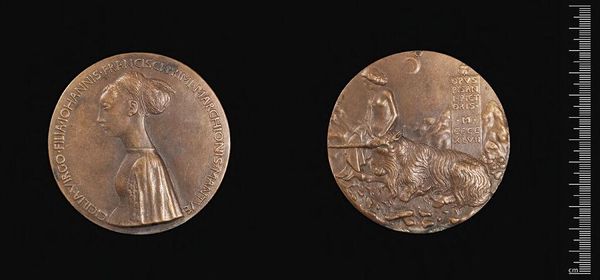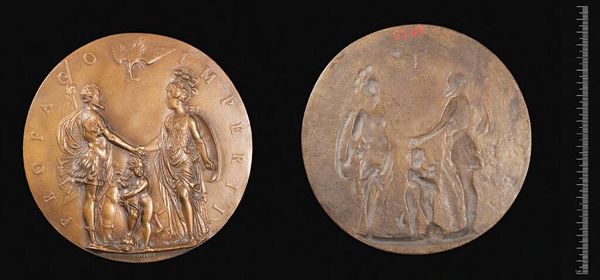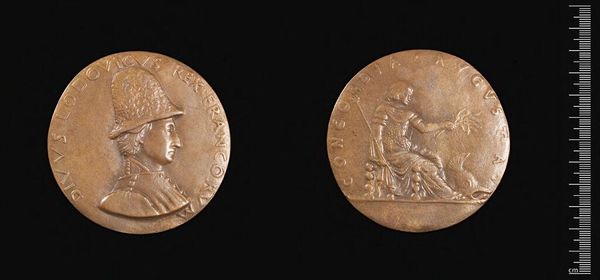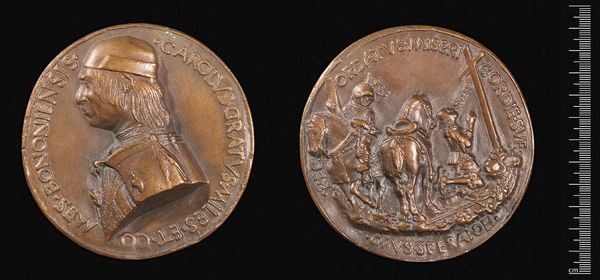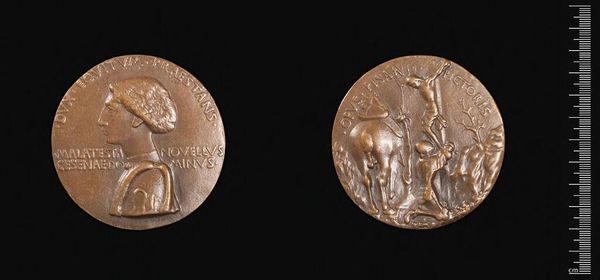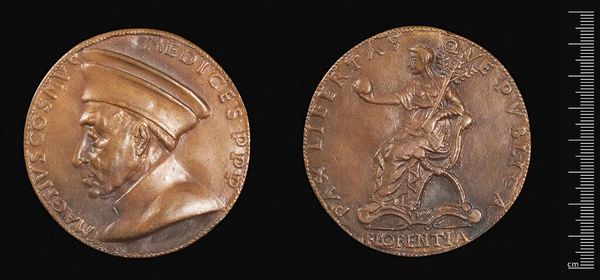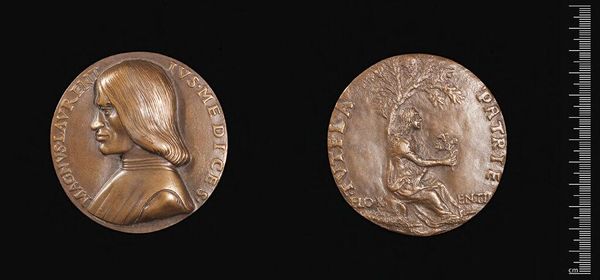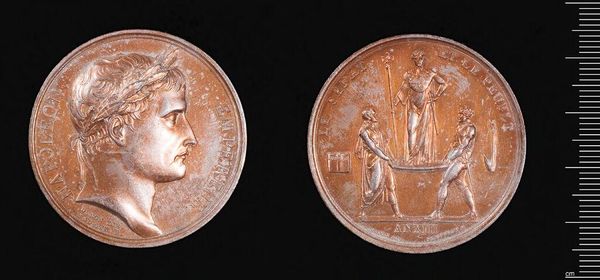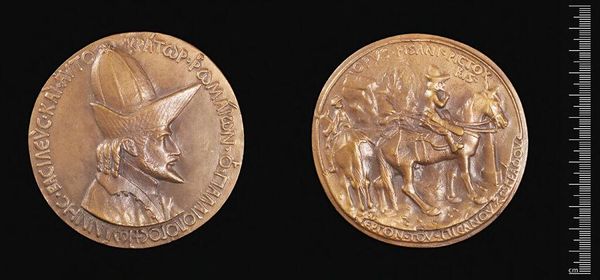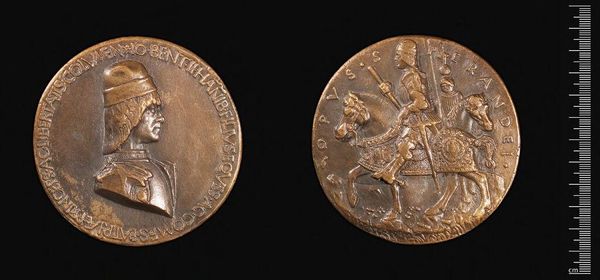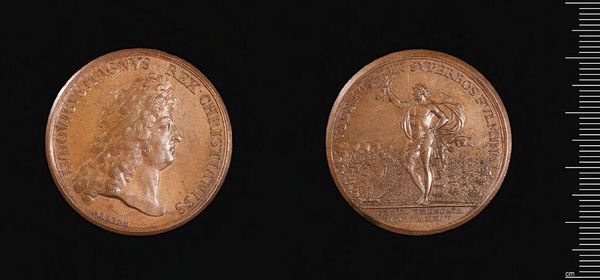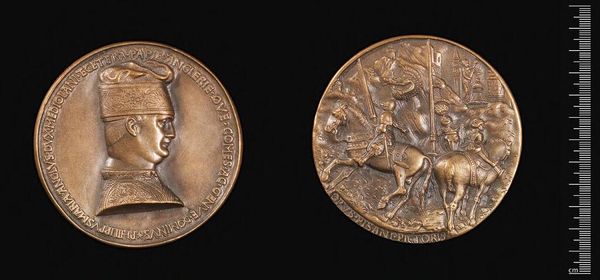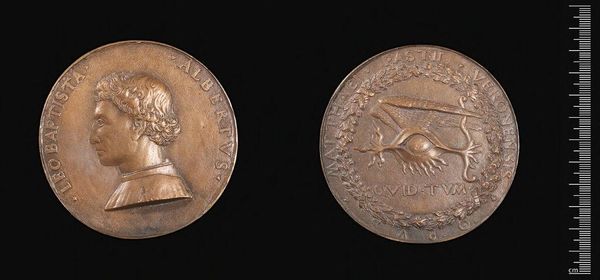
Marriage of Napoléon I (1769-1821) and Marie-Louise (1791-1847) 1810
Dimensions: 4 cm diam. x 0.4 cm depth (1 9/16 x 3/16 in.) 35.15 g
Copyright: CC0 1.0
Curator: This medal, now residing at the Harvard Art Museums, commemorates the marriage of Napoléon I and Marie-Louise. Julien Marie Jouannin designed its reverse. Editor: It's striking, isn't it? The bronze gives it such a weighty, substantial feel. It speaks volumes about power and permanence. Curator: Absolutely. Medals like these served as propaganda, shaping public perception of the emperor and his regime. The joining of Napoleon and Marie-Louise had immense social and political implications. Editor: Look at the detail in their profiles! And on the reverse, the symbols of power... It's clear this was meticulously crafted, a real feat of material production meant to broadcast a specific message. Curator: Precisely. They aimed to legitimize Napoleon’s empire through this union with the Austrian Habsburgs. The medal becomes a tool in consolidating power. Editor: It makes you think about the laborers involved in its creation, the foundries, and the distribution networks. It’s more than just art; it's an artifact of its production era. Curator: A powerful object, indeed, revealing the complex interplay of art, politics, and social ambition. Editor: A tiny bronze disc, yet radiating the grandeur and effort of an empire.
Comments
No comments
Be the first to comment and join the conversation on the ultimate creative platform.
